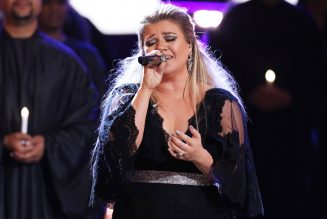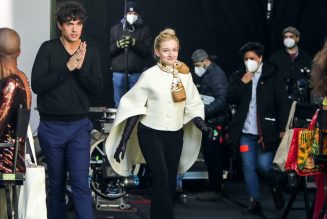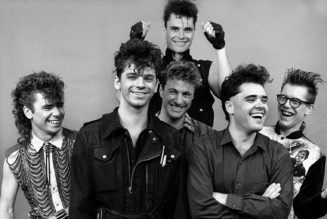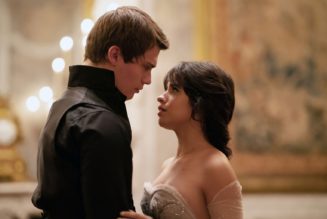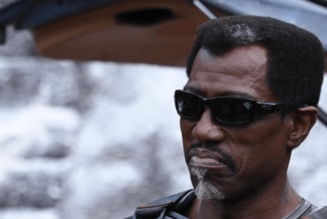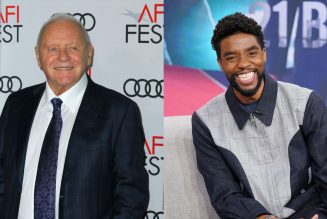By Erica Russell
For nearly four decades, Studio Ghibli has captured the hearts and imaginations of global moviegoers. Co-founded by celebrated Japanese auteur Hayao Miyazaki in 1985, the Tokyo-based studio has produced dozens of iconic films, including 1988’s beloved My Neighbor Totoro and 2001’s Academy Award-winning Spirited Away. Its pictures deliver whimsical adventures at once sweeping and small-scale, unforgettable characters, breathtaking animation and music, and complexly layered narratives that refuse to talk down to even its youngest audience members. Ghibli’s latest offering, Earwig and the Witch, is no different — except in one major way.
Based on the 2011 children’s book of the same name by Dianna Wynne Jones — author of Howl’s Moving Castle, adapted to film by Ghibli in 2004 — the movie centers the magical misadventures of a young orphan named Erica (the titular “Earwig”) following her adoption by a peculiar pair of supernatural beings: haughty, blue-haired witch-for-hire Bella Yaga and The Mandrake, a demonic entity who’s slightly less intimidating than his menacing scowl and glowing red eyes suggest. Unbeknownst to them, the three share a mysterious connection. Directed by Hayao Miyzaki’s son, Gorō Miyazaki (Tales From Earthsea, From Up on Poppy Hill), Earwig marks the studio’s first feature-length release in nearly six years. It’s also the studio’s first-ever 3-D, CGI film.
In the grand tradition of Ghibli, Earwig delivers delightfully eccentric characters, distinct visuals, and an enchanting story, but the film enters uncharted territory for the studio. Ghibli is widely regarded as a bastion of traditional animation, an art form that has waned in popularity at the cinema since the early 2000s — particularly in the West, where movies from DreamWorks, Illumination, and Blue Sky Studios reign supreme in a glossy, post-Pixar, computer-generated landscape.
When the film was first announced in June 2020, the notion of a computer-animated Studio Ghibli movie was not universally well-received by some longtime Ghibli fans accustomed to the studio’s legacy of traditional animation. But Miyazaki had an even tougher challenge to face than apprehensive viewers nostalgic for hand-drawn animation. “We didn’t have a system to create full 3-D CG in our studio to begin with, so it started with [finding] the people, equipment, and necessary systems,” Miyazaki tells MTV News. “We had to create much of that from scratch. The preparation took a long time and was a very challenging experience.”
Working as showrunner on Ronja, the Robber’s Daughter, a cel-shaded and computer-animated anime series made available to stream on Amazon in 2017, helped the director overcome the technical hurdles presented by Earwig, which took four years to create. He credits the series with “making me want to do a computer-animated film when I came back to Studio Ghibli.”
The next challenge would be translating Ghibli’s unmistakable artistic aesthetic through the new medium. Influenced in equal measure by classic Western animation and traditional Japanese anime, the studio’s universally recognizable style balances captivating realism with buoyant cartoonishness. Picturesque scenery and meticulously detailed landscapes form immersive, fantastical environments — even more grounded, everyday locales often incorporate quirky flourishes, such as an antique shop in 1995’s Whisper of the Heart — that are juxtaposed with simplistically designed, yet vibrant characters.
 Courtesy of GKids
Courtesy of GKidsIn Earwig, the Ghibli style manifests via inviting, elaborate CG backdrops, such as Bella Yaga’s colorful, cramped apothecary, a mesmerizing space that recalls Howl’s regal, maximalist lair (Howl’s Moving Castle) or Fujimoto’s phantasmagoric potions room (Ponyo). In contrast, the digitally rendered characters were inspired by stop-motion animation and appear more tangible, plasticky, and occasionally stiff. The design allows for finer renderings of small details, as with the freckles on Erica’s cheeks or the textured fabrics of characters’ clothing.
“I discovered that there are a lot of people who are talented in their own fields, in the world of computer animation,” Miyazaki says of his experience working with fresh, digitally skilled talent on Earwig. “Meeting these people and working with them was a wonderful experience for me. The fact that I was able to watch them work was very, very inspiring.”
This eagerness to experiment is trademark Ghibli. Across its decades of operation, the award-winning studio helped usher in an air of cultural prestige for animation through intelligent storytelling and a high standard of artistic quality, influencing renowned animation studios in the process. Former Pixar Chief Creative Officer John Lasseter has been vocal about his longtime reverence for Hayao Miyazaki’s work, and Ghibli characters have even made cameos in the company’s films, such as the Totoro plush in Toy Story 3. More recently, while working on their acclaimed 2020 film, Wolfwalkers, respected Irish animation studio Cartoon Saloon (The Secret of Kells, Song of the Sea) found creative inspiration in 2013’s Academy Award-nominated The Tale of Princess Kaguya.
Ghibli also helped reshape public perception of Japanese animation, both at home and abroad. “[Ghibli co-founders] Isao Takahata and Hayao Miyazaki changed people’s perspectives towards anime,” Miyazaki says. “Before them, anime was something for children, but they made films that even grown-ups could enjoy. That led to a new generation of Japanese animation, which requires complexity and depth both in the storytelling and in the visual form. I think [being able] to achieve those two things has led to the success of Studio Ghibli so far.”
Ghibli’s success depends equally on its memorable characters. Like so many of the studio’s on-screen heroines before her, from Kiki’s Delivery Service’s hard-working Kiki to Spirited Away’s strong-willed Chihiro, Earwig’s Erica is a tenacious young girl. Still, she’s unexpected within the canon of Ghibli characters: Yes, she’s precocious and brave, but she can also be impish and, when pushed to her limits, outlandishly vindictive. This polarity of well-meaning mischievousness makes the little would-be witch surprisingly endearing as she manipulates the adults around her to get by in the world. As Miyazaki puts it, “I like the fact that she’s not necessarily your typical good girl. She’s very charming and a lot of fun to watch.”
Witches have enjoyed a recurring presence in Ghibli’s fantastical filmography over the years, popping up as lovable protagonists (the aforementioned Kiki), multidimensional villains (Spirited Away’s Yubaba, Howl’s Moving Castle’s Witch of the Waste), and friendly allies (Spirited Away’s Zeniba). In Earwig, witches are multifaceted women. There’s Erica, a cheeky young witch in training; her cryptically absent mother, a rock star on the run from a coven; and Bella Yaga, an at-first cruel adoptive mother figure with a tumultuous past. But for Ghibli, witchcraft represents more than just a plot device.
“When you have people flying in the sky, if you tell them that it’s magic, then you don’t need any further explanation,” Miyazaki says. “It’s very fun to portray these things as a creator and director. I think people feel that there’s something special about witches — magic gives us humans a special power to do extraordinary stuff.”
Embracing all things extraordinary has always been part of the Ghibli tradition, as has innovation. In a playful reference to his famously stubborn father, Miyazaki jokes that, at its core, Studio Ghibli is “a very difficult person, who is a rebel at heart, who doesn’t want to do what other people do.”
 Courtesy of GKids
Courtesy of GKidsAs Ghibli looks forward, however, its talented crew may be further tasked to adapt their storytelling for a CGI-dominant landscape in an effort to keep up with international demands. While Earwig is an imperfect film — though the digital worldbuilding is lush and that quintessential Ghibli food looks as delectable as ever, some critics have said that the character renders need refinement and that the story ends too abruptly — the studio certainly seems up for the challenge.
Studio Ghibli is in the midst of transformation, as evident from the medium of their latest film to their newly launched social media accounts and expansion to global streaming platforms, a signal that the esteemed Japanese animation house is becoming more digitally minded. Fear not, though, Ghibli purists: Miyazaki says the company’s dedication to the art of traditional animation is hardly a thing of the past.
“There’s no definite future set for Studio Ghibli. Personally, I love hand-drawn animation. A lot of Japanese fans and people around the world love to see hand-drawn animation, so I’m sure that Ghibli will continue to do that. On the other hand, globally, we do see that 3-D CGI is becoming a huge trend. I hope that we’ll be able to work in both worlds to enable us to have more possibilities.”


